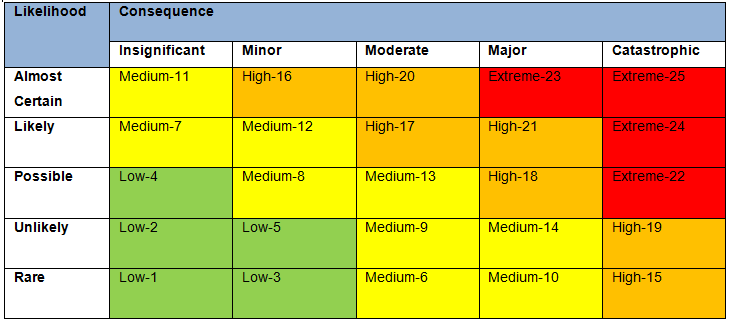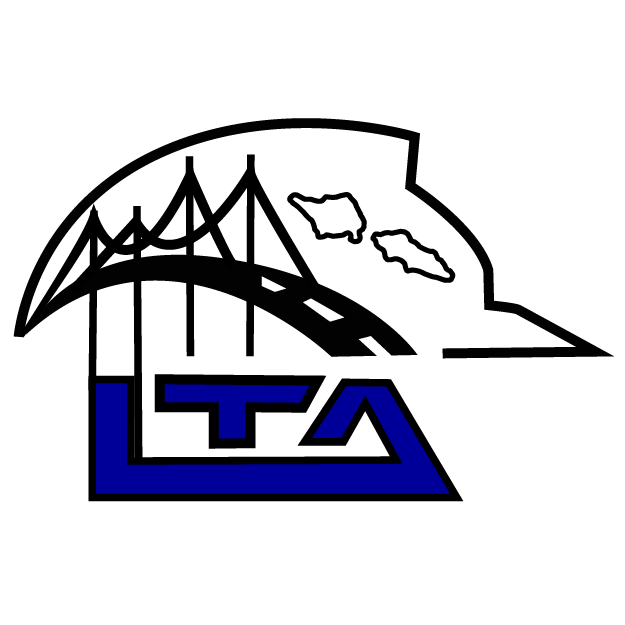Information
-
Document No.
-
Audit Title
-
Client / Site
-
Conducted on
-
Prepared by
-
Location
-
Personnel
Inspection Details
-
Background: Inspection of banks to identify collapse and/or erosion within the ponded area or downstream of infrastructure associated with the Wide Bay and Teddington Weir Water Supply Schemes is required after a rapid water level change, large flow through the scheme, or other occasions when erosion of banks may be likely.
-
Location of Inspection
-
Inspected By (1)
-
Inspected By (2)
-
Date & Time of Inspection
Inspection Instructions
-
1. Use this checklist to inspect for bank instability hazards associated with the Wide bay and Teddington Weir Water Supply Schemes, as per the Hazard Inspection Matri.
2. The responsible person as indicated in the Hazard Inspection Matrix may delegate the responsibility to Managers, Supervisors, WHSRs, or other trained workers. Ideally the inspection will be carried out by two person to ensure an accurate assessment.
3. For any 'Y' ticked, conduct a risk assessment using the 'Risk Assessment Calculator' and write down the risk level on the checklist. (any code identified as either an E or H based on a safety risk must be immediately reported to the Treatment manager or Catchment Manager, or in the case of a safety issue the WHSO so a formal, documented risk assessment may be conducted).
4. When completed, rectify all identified hazards where possible. The Treatment or Catchment Manager will transfer any hazard that can't be rectified immediately to the relevant 'Rectification Action Plan' (RAP).
5. The Treatment and Catchment Manager will coordinate the investigation and delegation of the RAP.
6. The Investigation team will discuss the control/corrective actions and monitor if the RAP has been effectively actioned, verified and signed off. -
Inspection Sites:
Lenthalls Dam (headwater and tailwater), Burrum Weir 1 (headwater and tailwater), Burrum Weir 2 (headwater and tailwater), Teddington Weir (headwater and tailwater). -
Definitions:
No action Req: Hazard/Checklist item does not need any further action, risk is satisfactorily controlled
Rectified: Hazard/Checklist item has been rectified at time of inspection
Transfer to RAP: The Hazard/Checklist item cannot be rectified immediately & needs to be transferred to the Rectification Action Plan for the specific site (located in the Hazard Database and updated by the WHSO). -
Risk Assessment Calculator
Checklist Page 1
-
BANK INSTABILITY – Slides, undercut, slump indicate that damage to the embankment has occurred and may require immediate action.
-
1. Is there evidence of bank erosion upstream or downstream of the Dam/Weir/Culvert?
-
Risk Level
-
Comments
-
Describe the location of the bank erosion - Facing Downstream is the erosion on the let or right bank?
-
Attach Photo of Erosion
-
Comments
-
Are there signs of further instability surrounding the affected area?
-
Comments
-
Is the instability associated with the nature or operation of the infrastructure?<br>FIR (Further Investigation Required).
-
Comments
-
Provide a description of the location and extent of erosion and any other information to assist with further investigation.
-
Officer Responsible
-
Status
Checklist Page 2
-
2. Are there any signs of bank undercut?
-
Risk Level
-
Officer Responsible
-
Status
- No Action Req.
- Rectified
- Transfer to RAP
-
Comments
-
3. Are there signs of bank slump?
-
Risk Level
-
Officer Responsible
-
Status
- No Action Req.
- Rectified
- Transfer to RAP
-
Comments
Checklist Page 3
-
4. Is the erosion a safety risk? (assets or the community)
-
Risk Level
-
Officer Responsible
-
Status
- No Action Req.
- Rectified
- Transfer to RAP
-
Comments
-
5. Are there any gullies forming on the downstream face due to surface runoff erosion?
-
Risk Level
-
Officer Responsible
-
Status
- No Action Req.
- Rectified
- Transfer to RAP
-
Comments
Checklist Page 4
-
6. Was the bank erosion associated with the nature or operation of infrastructure?
-
Risk Level
-
Officer Responsible
-
Status
- No Action Req.
- Rectified
- Transfer to RAP
-
Comments
-
7. Are there any signs of people or animals associated with the site of erosion?
-
Risk Level
-
Officer Responsible
-
Status
- No Action Req.
- Rectified
- Transfer to RAP
-
Comments
Comprehensive Inspection
-
Actions From Comprehensive Inspection
-
Entry Required?
-
Actions Completed
-
Corrective Action if found to be non-compliant
-
Officer Responsible
-
Comments
-
Entry Required?
-
Actions Completed
-
Corrective Action if found to be non-compliant
-
Officer Responsible
-
Comments
-
Entry Required?
-
Actions Completed
-
Corrective Action if found to be non-compliant
-
Officer Responsible
-
Comments
-
Entry Required?
-
Steps taken
-
Corrective Action if found to be non-compliant
-
Officer Responsible
-
Comments
Rectification Action Plan
-
Rectification Action Plan (RAP)
-
Location:
-
Entry Required?
-
Status:
-
No.
-
Priority Level:
-
Hazard/Non Compliance:
-
Risk level before control:
-
Recommendation for Corrective Action:
-
Raised By:
-
Date Identified:
-
ST or LT:
-
Risk level after control:
-
Responsible Officer/s, Supervisor, Manager
-
Proposed Completion Date:
-
Actual Completion Date:
-
Verified By:
-
Entry Required?
-
Status:
-
No.
-
Priority Level:
-
Hazard/Non-Compliance:
-
Risk level before control:
-
Recommendation for Corrective Action:
-
Raised By:
-
Date Identified:
-
ST or LT:
-
Risk level after control:
-
Responsible Officer/s, Supervisor, Manager
-
Proposed Completion Date:
-
Actual Completion Date:
-
Verified By:
-
Entry Required?
-
Status:
-
No.
-
Priority Level:
-
Hazard / Non-Compliance:
-
Risk Level before control:
-
Recommendation for Corrective Action:
-
Raised By
-
Date Identified
-
ST or LT:
-
Risk level after control:
-
Responsible Officer/s, Supervisor, Manager
-
Proposed Completion Date
-
Actual Completion Date
-
Verified By









